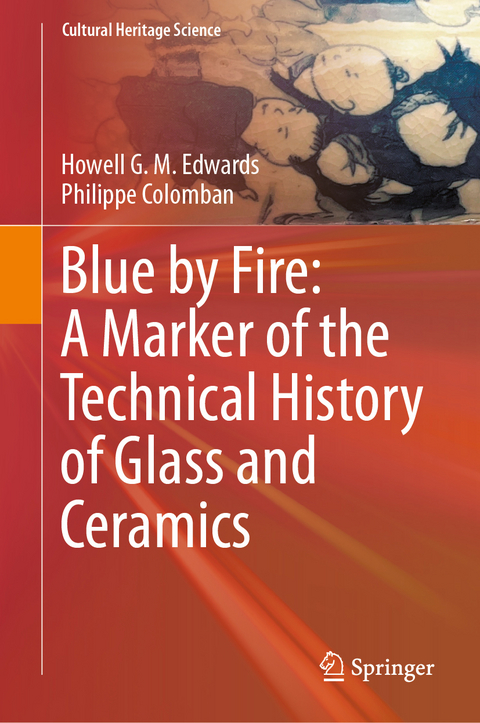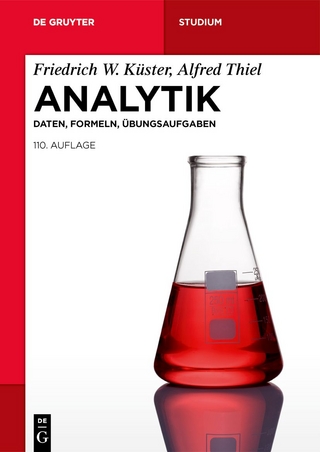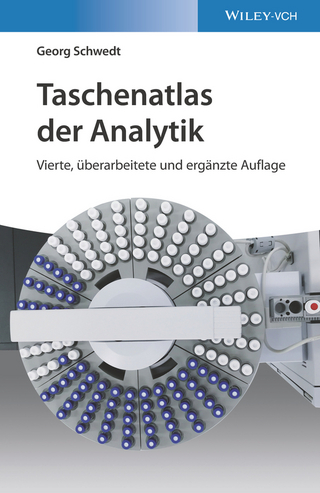
Blue by Fire: A Marker of the Technical History of Glass and Ceramics
Springer International Publishing (Verlag)
978-3-031-77121-7 (ISBN)
- Noch nicht erschienen - erscheint am 10.02.2025
- Versandkostenfrei innerhalb Deutschlands
- Auch auf Rechnung
- Verfügbarkeit in der Filiale vor Ort prüfen
- Artikel merken
The use of natural mineral and synthetic blue pigments in antiquity for wall paintings and illuminated manuscript historiation evolved into the most suitable blue pigments for the decoration of glazed and enamelled wares (ceramics, glass and metal) which required a stability at the high temperatures of the kilns used for glazing and firing. Historic literature is often vague regarding the blue pigments used for this purpose. The generic term "cobalt blue" covers a wide range of pigments that were actually used for the decoration of faience, majolica, stonewares, earthenwares and porcelains.
This book addresses the application of elemental and molecular spectroscopic analytical techniques to a range of diverse problems which arise for decorated ceramics, glass and enamels and related artefacts: a history of techniques, provenance and authentication. The text contains an introduction to the important analytical techniques that are used in destructive and nondestructive analytical measurements and highlights potential future applications based upon novel miniaturised instrumentation for in-situ studies. The book is co-authored by two international experts with many years' experience in the application of analysis to artworks and archaeological artefacts and in the investigation of materials and sites for cultural heritage preservation. Among 19 chapters one is devoted to an evaluation of the analytical techniques that are used and the pitfalls which can arise in the interpretation of the data. The approach conveys the detailed information which has become available from the adoption of analytical techniques to diverse problems through the scientific interrogation of ceramic and related artefacts. Examples are given of how the pigment analysis and sourcing can provide unique information about ancient trade routes and pigment sourcing historically. A classic instance is provided by the transfer of European enamelling technologies carried out at the beginning of the 17th century in Japan (Arita) and at the turn of the 17th-18th centuries in China by the Jesuits established at the Court of, respectively, the Kyushu island of Daymios and the Chinese Qing Empero Kangxi. It has hence been demonstrated that some of the most beautiful porcelains emanating from Japan and China in this period incorporate blue decoration with pigments supplied from Europe. The interpretation of the analytical data can assist museum curators, archaeologists, art dealers/experts and cultural heritage historians in the preservation and conservation of ancient materials which have applied blue pigment decoration.
Professor Howell G.M. Edwards M.A., B.Sc., D. Phil., C.Chem., FRSC.
Howell Edwards is Professor Emeritus of Molecular Spectroscopy at the University of Bradford. He read Chemistry at Jesus College in the University of Oxford and after completing his B.A. and B.Sc. degrees he studied for his doctorate in Raman spectroscopy at Oxford and then became a Research Fellow at Jesus College, University of Cambridge. He joined the University of Bradford as a Lecturer in Structural and Inorganic Chemistry, becoming Head of the Department of Chemical and Forensic Sciences, and was awarded a Personal Chair in Molecular Spectroscopy in 1996. He has received several international awards (Sir Harold Thompson Award; Charles Mann Award; Emanuel Boricky Medal; Norman Sheppard Award) in a spectroscopic career which has resulted in the publication of 1400 research papers in Raman spectroscopy and the characterisation of materials, along with six books on the application of this analytical technique to art, archaeology and forensic science. He has had a lifelong interest in the porcelains of William Billingsley, especially those from the Derby, Nantgarw and Swansea factories and has authored eight books on porcelain: Swansea and Nantgarw Porcelains: A Scientific Reappraisal, Nantgarw and Swansea Porcelains: An Analytical Perspective, Porcelain to Silica Bricks: The Extreme Ceramics of William Weston Young, 1776-1847, 18th and 19th Century Porcelain Analysis: A Forensic Provenancing Assessment, Porcelain Analysis and Its Role in the Forensic Attribution of Ceramic Specimens, "Raman Spectroscopy in Cultural Heritage Preservation" ( with Philippe Colomban and Peter Vandenabeele ,) , Armorial Porcelain : The Genesis ( with Rachel and Morgan Denyer ) and Welsh Armorial Porcelains: Nantgarw and Swansea Crested China, published by Springer Publishing, Dordrecht, The Netherlands and two specialist texts , namely : " The Pendock-Barry Porcelain Service : A Forensic Evaluation" (with R Denyer and M Denyer ) and "The Farnley Hall Service : A Unique Survivor in Nantgarw Porcelain". He has also produced several monographs: William Billingsley - The Enigmatic Porcelain Artist, Decorator and Manufacturer; Nantgarw Porcelain ( with M.D. Denyer ) - The Pursuit of Perfection; Swansea Porcelain - the Duck-Egg Translucent Vision of Lewis Dillwyn and Derby Porcelain: The Golden Years, 1780-1830. Howell Edwards is Honorary Scientific Adviser to the de Brecy Trust on the scientific evaluation of their artworks and paintings.
Professor Philippe Colomban MSc, Ph.D.
Philippe Colomban is CNRS Research Professor Emeritus (Directeur de Recherche CNRS émérite) since 2018 at the Sorbonne Université (Laboratory UMR SU-CNRS 8233: from molecule to nano-objects: Reactivity, Interactions and Spectroscopy). After an MSc in Ceramics, Glass & Cement Engineering (ENSCI-Sèvres) in 1975 and a MSc in Solid State Physics (DEA) in 1976, Philippe Colomban obtained in 1979 his Ph.D. Hab. degree (Docteur es-Sciences Physiques) from the Université Pierre-et-Marie-Curie (now part of Sorbonne Université). He was one of the first in the world to develop Sol-Gel routes for advanced optoelectronic PLZT ceramics. He studied then the structure of superionic conductors and ion mobility at different scales for battery design. From 1989 to 1993 he was responsible for new projects at the Materials Department of ONERA, the French Establishment for Aerospace Research and Development (materials for rockets and missiles, aircraft engines, sol-gel routes, ceramic- and polymer-matrix composites, fibres, nanoparticle-based microwave absorbing materials and functionally graded composites ) and worked as a Consultant at ONERA for 10 additional years. From 1994 to present, as CNRS Research Professor, and as director of the UMR7075 Laboratory from 2002 to 2010, his research interests include materials science and spectros
Chapter 1 : Introduction.- Chapter 2 : Blue Minerals.- Chapter 3 : Blue Pigments in Antiquity.- Chapter 4 : Blue Pigments in the Renaissance and Afterwards.- Chapter 5 : Analytical Methods.- Chapter 6 : The Role of Analysis in the Holistic Provenancing of Ceramics.- Chapter 7 : Egyptian Blue - the first synthetic blue pigment.- Chapter 8 : The Cobalt Blues : Smalt , Cerulean Blue , Bristol Blue , Cobalt Blue.- Chapter 9 : Lapis Lazuli in Glass and Enamels.- Chapter 10 : Islamic Ceramics and Glass.-Chapter 11 : French Faience and Italian Majolica.- Chapter 12 : European Glass Manufacture.- Chapter 13 : Asian Stonewares and Porcelains.- Chapter 14 : Delftwares and Kraak porcelains.- Chapter 15 : European ( Continental) Porcelains.- Chapter 16 : English , Welsh , Scottish and USA Porcelains.- Chapter 17 : Summary and Conclusions.
| Erscheint lt. Verlag | 10.2.2025 |
|---|---|
| Reihe/Serie | Cultural Heritage Science |
| Zusatzinfo | XXI, 515 p. 142 illus., 115 illus. in color. |
| Verlagsort | Cham |
| Sprache | englisch |
| Maße | 155 x 235 mm |
| Themenwelt | Geisteswissenschaften ► Archäologie |
| Naturwissenschaften ► Chemie ► Analytische Chemie | |
| Naturwissenschaften ► Chemie ► Physikalische Chemie | |
| Technik ► Maschinenbau | |
| Schlagworte | Analytical Chemistry • Blue and White Decoration on Ceramics • blue pigments • coloured glass • Early Porcelains • Egyptian blue • Spectroscopy and Microscopy • Synthetic and Natural Blue Pigments |
| ISBN-10 | 3-031-77121-4 / 3031771214 |
| ISBN-13 | 978-3-031-77121-7 / 9783031771217 |
| Zustand | Neuware |
| Informationen gemäß Produktsicherheitsverordnung (GPSR) | |
| Haben Sie eine Frage zum Produkt? |
aus dem Bereich


